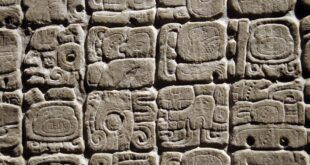The Top 10 Most Fascinating Discoveries in Paleoanthropology
The Study of Human Evolution
Paleoanthropology, the study of ancient humans and their ancestors, is an exciting field that has yielded numerous groundbreaking discoveries over the years. From uncovering the origins of our species to revealing new insights into our behavior, here are the top 10 most fascinating discoveries in paleoanthropology.
1. Lucy, the Ethiopian Australopithecus
In 1974, a team of scientists discovered the partial skeleton of a 3.2 million-year-old female hominin in Ethiopia named “Lucy.” This early human ancestor, known as Australopithecus afarensis, offered the first clear evidence that upright walking on two legs was an early development in our evolutionary history.
2. Neanderthal Genome
In 2010, the sequencing of the Neanderthal genome revealed that this extinct human species interbred with modern humans, contributing to the genetic makeup of many populations worldwide. This discovery reshaped our understanding of human evolution and provided evidence of our complex past.
3. Early Human Migration out of Africa
Fossils and genetic studies have revealed that Homo sapiens originated in Africa around 300,000 years ago. While the details of how humans spread across the globe are still being studied, it is clear that early humans migrated out of Africa to Asia, Europe, and the Americas and adapted to a variety of environments.
4. Piltdown Man, a Fraudulent Fossil
One of the greatest paleoanthropology hoaxes was the discovery of the “Piltdown Man” in England in 1912. The skull and jaw fragments were claimed to be the “missing link” between apes and humans but were later revealed to be a forgery.
5. Microscopic Analysis of Teeth
In recent years, researchers have used microscopic analysis of the wear and tear on teeth to determine some of the dietary and social habits of early humans. This method has led to new insights into the food choices, tool use, and social interactions of our ancient ancestors.
6. Homo floresiensis, the “Hobbit” Hominin
In 2003, the discovery of a tiny human species on the Indonesian island of Flores aroused curiosity and controversy. Homo floresiensis stood only three feet tall and had a small brain size compared to other hominins, leading many to dub them “hobbits.” Debate continues over the origins and the implications of this unique find.
7. Denisovans, a New Human Species
In 2010, DNA analysis of a fossilized pinky bone from Siberia identified a new species of early humans – the Denisovans. Like the Neanderthals, this group interbred with modern humans, contributing genetic diversity to many current populations.
8. Stone Tools and Clothing
Stone tools are tangible clues to the technology and skills of early humans, opening a window into their daily lives. Clothing is another crucial technological innovation that enabled humans to live in a wide range of environments, often compared to a ‘second skin’. The appearance of modern humans (around 200,000 years ago) coincides with the discovery of effective clothing materials.
9. Early Cave Art and Symbolic Thinking
The creation of cave art marked a turning point in human behavior, as it demonstrates early humans used non-verbal, symbolic language. The earliest forms of human expression date back over 100,000 years ago and are found in caves in different parts of the world.
10. Changing Perception of Gender Roles in Paeloanthropology Studies
The debate surrounding the cultural, social and economic roles of men, women, and wider gender identities has engulfed anthropology for many years. However, uncovering new evidence through fossil records allows the review of the assumptions surrounding gender roles. Today, although the conclusions are disputed, there seems to be growing consensus that societies over prehistory had much more diversity than we initially thought.
Conclusion
The field of paleoanthropology is constantly evolving, and its discoveries revolutionize our understanding of human evolution. However, these top ten exciting findings highlighted in this article are a testament to the vast achievements and breakthroughs accomplished in understanding the roots of humanity’s origin. Whether it confirms long-held beliefs or disrupts conventional thinking, earth-shattering remains from the enigmatic age of early-human evolution never seem to run out.
 Mind Uncharted Explore. Discover. Learn.
Mind Uncharted Explore. Discover. Learn.



